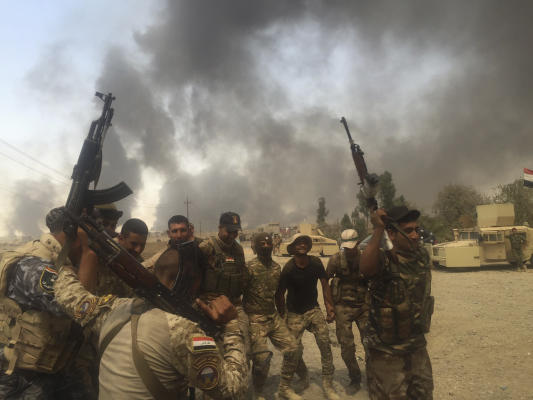Iraq is right on track with meeting its objective realizing the city of Mosul’s take back from ISIS later this year, the head of the U.S. military’s Central Command said on Tuesday.
However, the advance according to schedule is conditioned by Prime Minister Haider al-Abadi choosing to go forward as planned, the military official added.
Although Iraqi and U.S. officials have not announced a timetable for moving on the city, a senior Baghdad-based diplomat said last month Abadi wanted to bring forward the start of the Mosul campaign to October.
“It’s the prime minister’s objective to have that done by the end of the year,” General Joseph Votel, who oversees U.S. forces in the Middle East, told a news conference.
“My assessment is that we can meet the … prime minister’s objectives, if that’s what he chooses to do.”
Two years since ISIS seized wide swathes of northern and western Iraqi lands, Votel said that tables had firmly turned against the militant group as it loses territory in its self-declared “caliphate”.
Mosul has been the largest urban center under the militants’ control, with a pre-war population of nearly 2 million. It was from Mosul’s Grand Mosque in 2014 that ISIS leader Abu Bakr al-Baghdadi declared a “caliphate” spanning regions of Iraq and Syria.
Votel said the battle for Mosul could present a mixed picture for war planners, with ISIS retreating in some areas only to reinforce in others.
“ISIS has to make hard decisions, because they’re being pressured in a variety of ways,” Votel said.
He pointed to the two-and-a-half month battle by U.S.-backed forces in Syria to take back the town of Manbij from ISIS as an example of how fighting could become protracted.
“We should expect that in some places, perhaps in some parts of Mosul, they will cede that area to us, to the coalition, to the Iraqis. And then in other areas, they will fight harder to hold onto that,” Votel said.
The U.N. estimates that under a worst-case scenario, more than 1 million people could be displaced from Mosul and another 830,000 from a populated corridor south of the city, adding to the burden of caring for 3.5 million Iraqis displaced by ISIS’ 2014 onslaught and U.S.-backed Iraqi counter-offensives.
